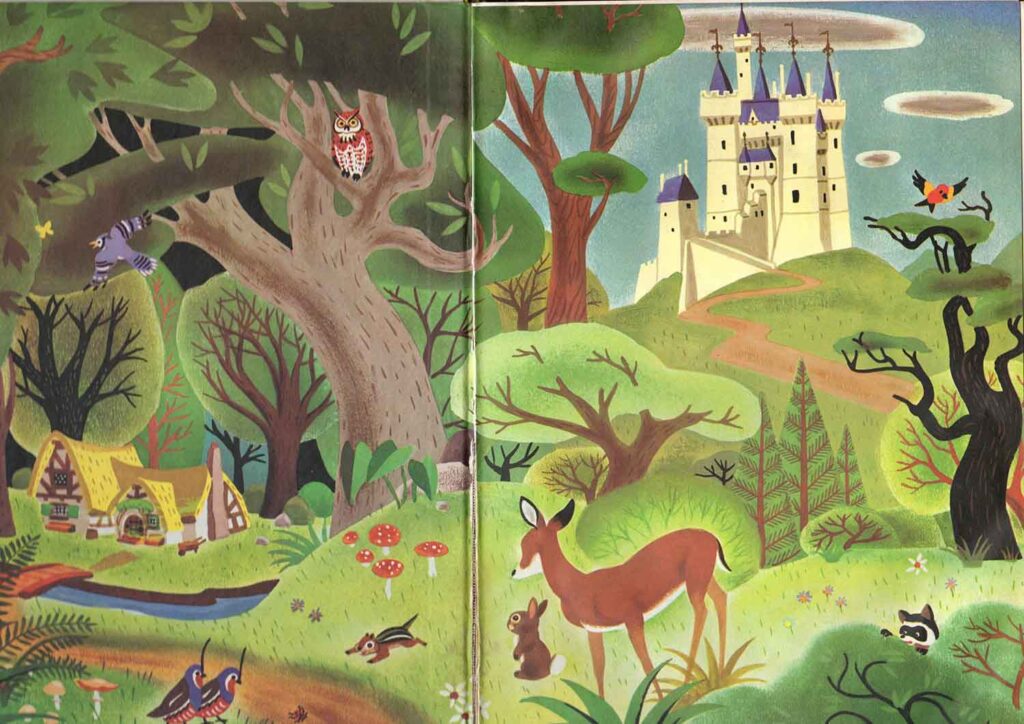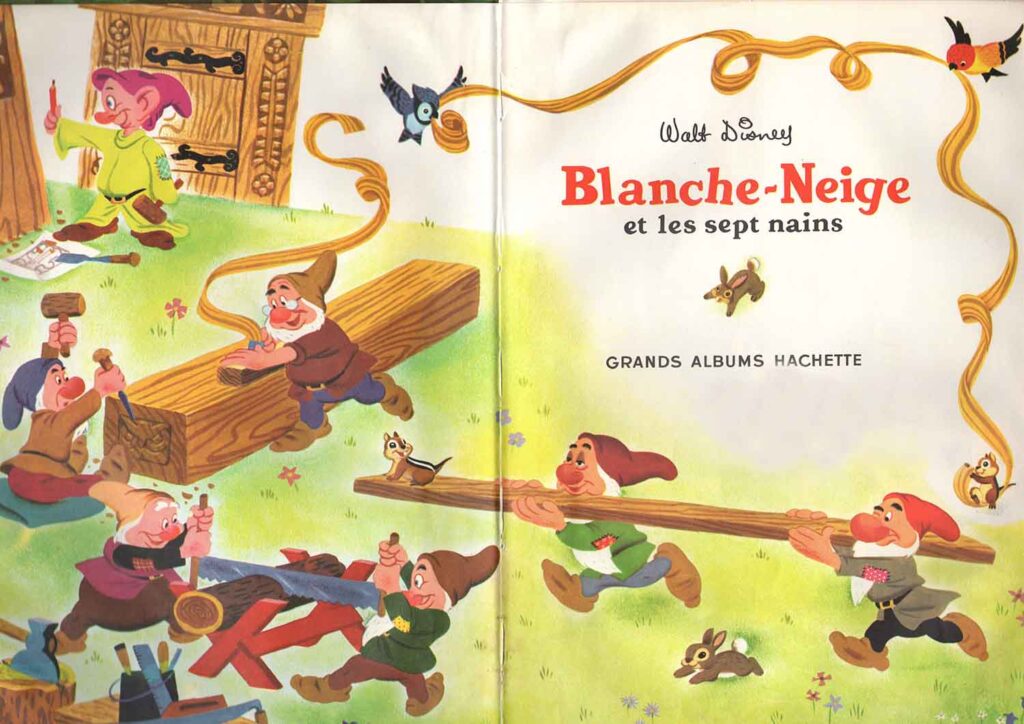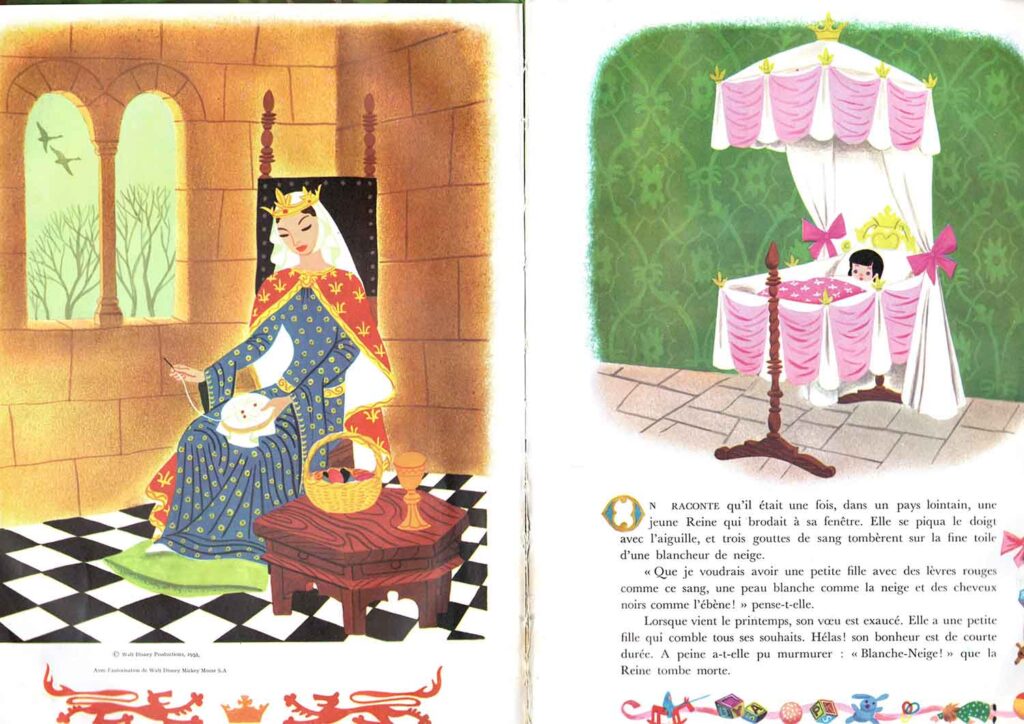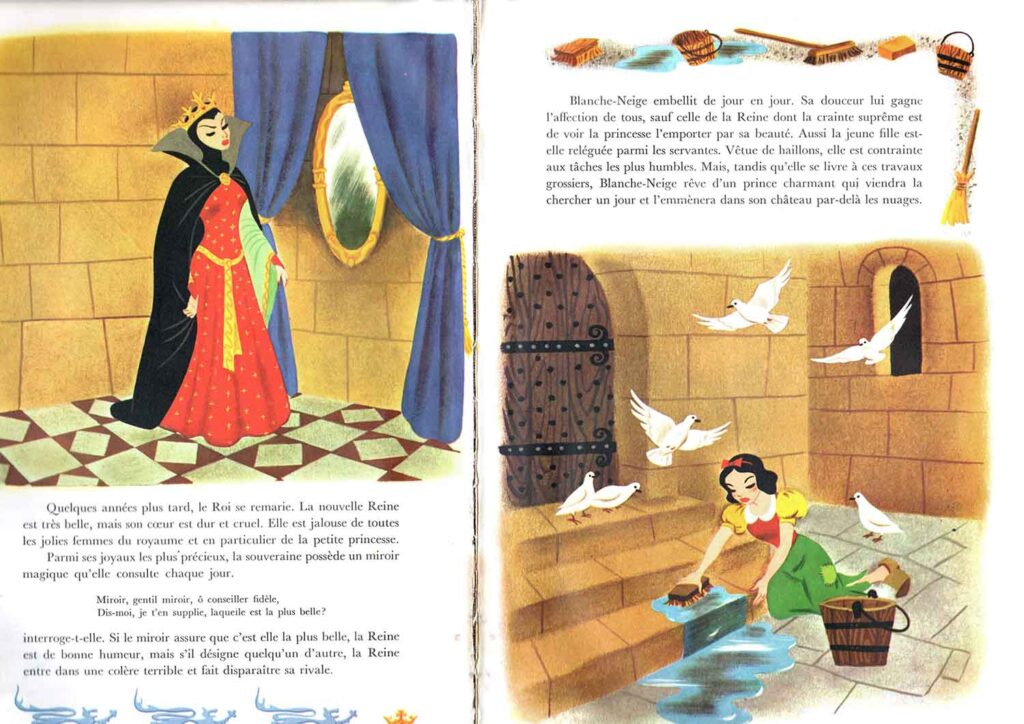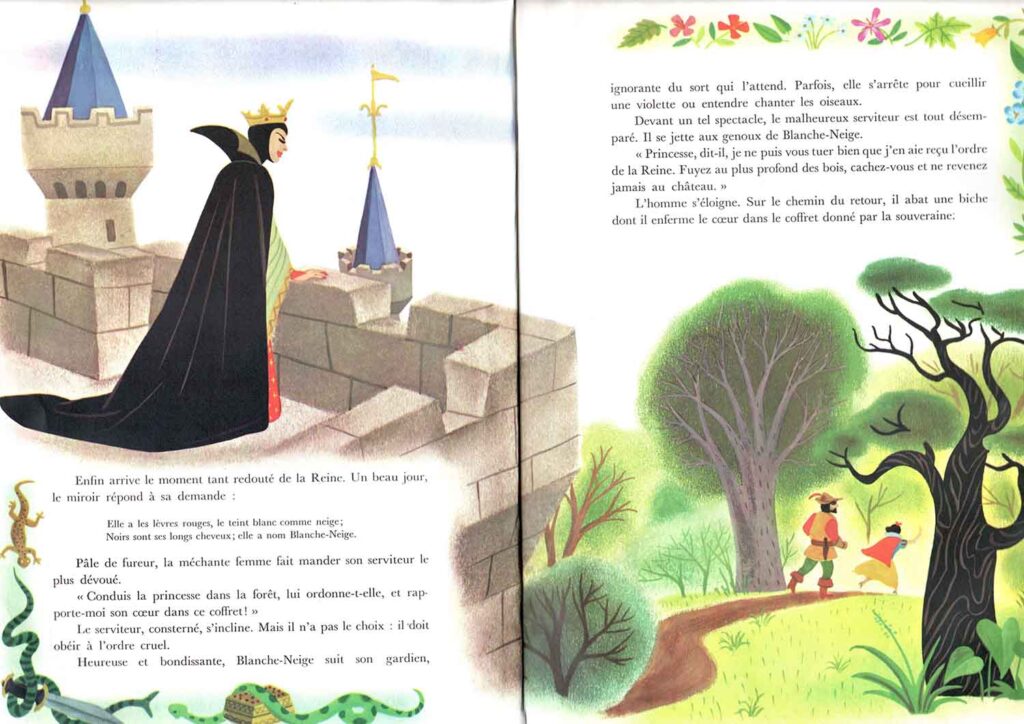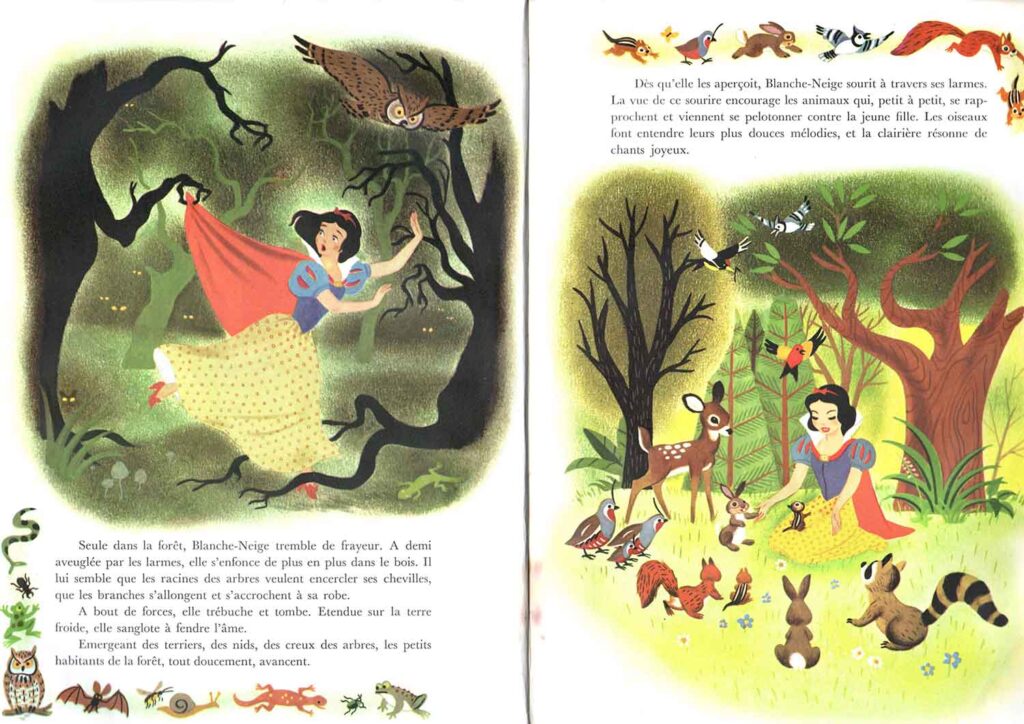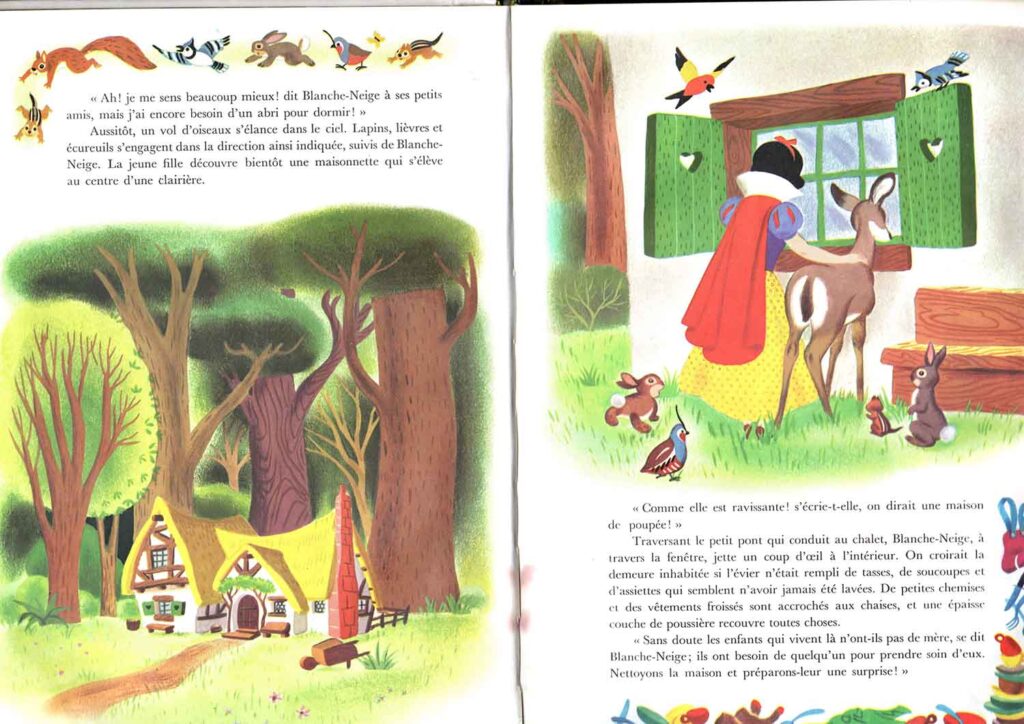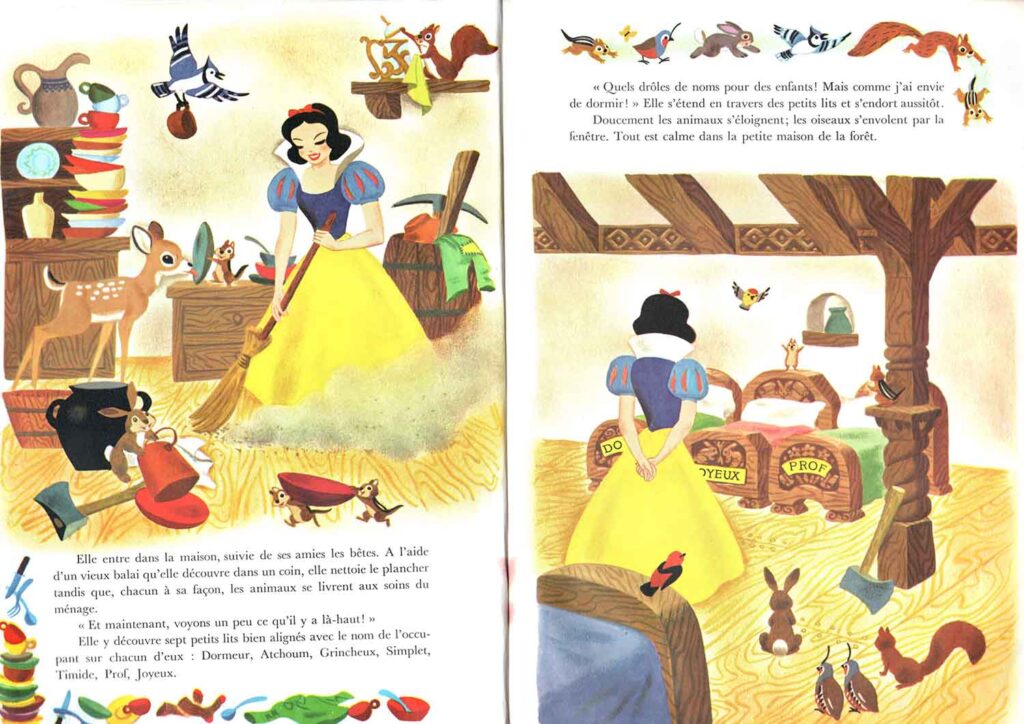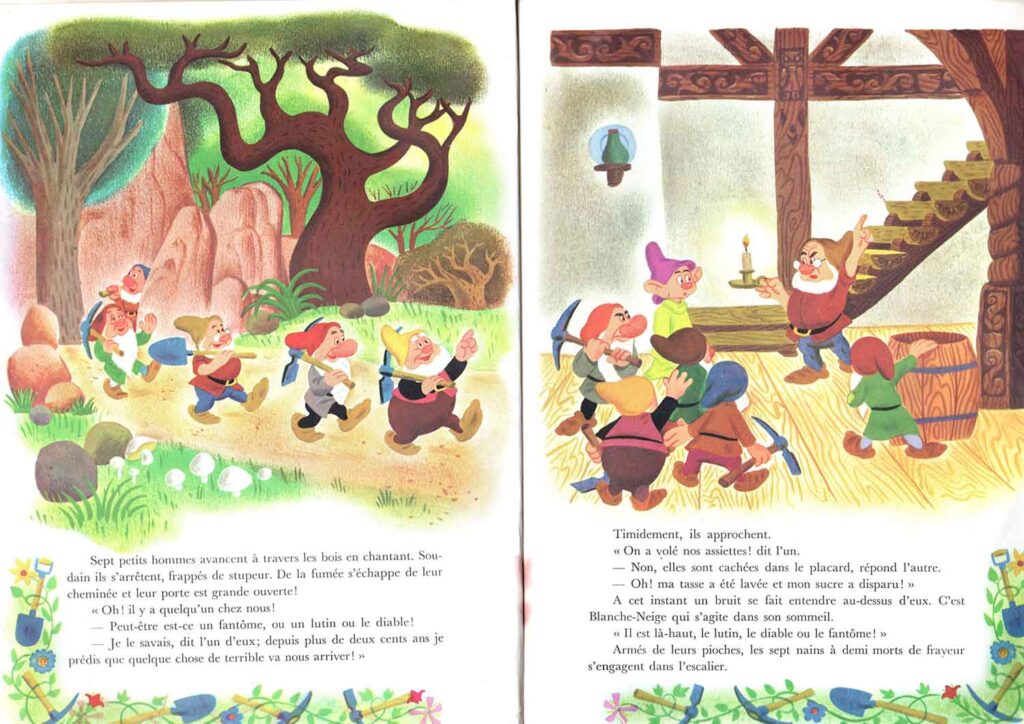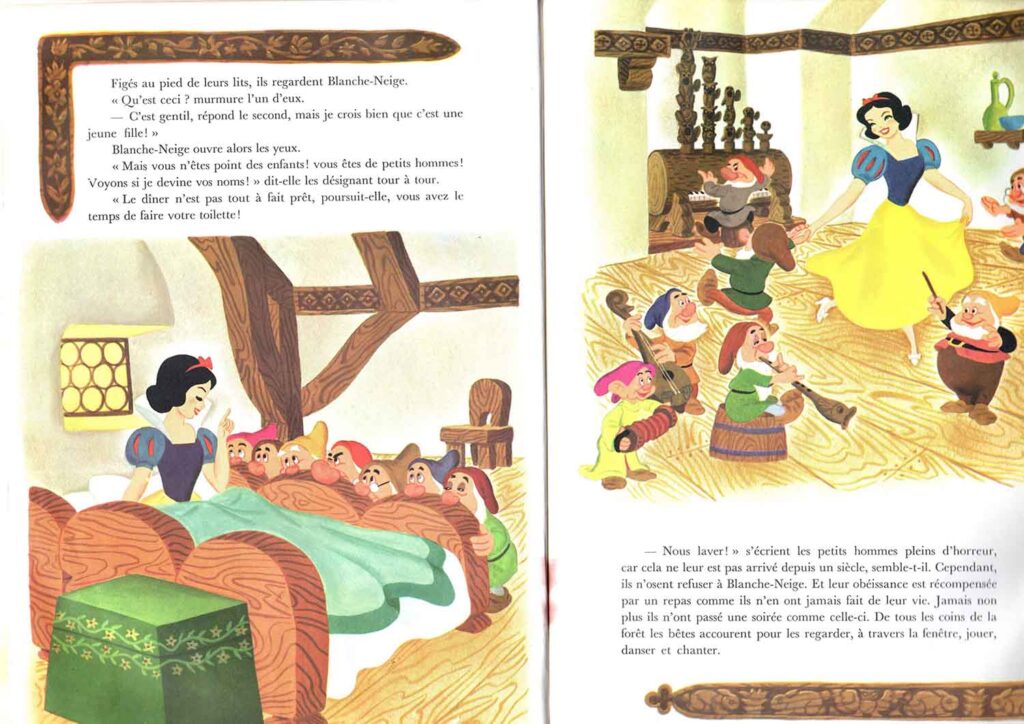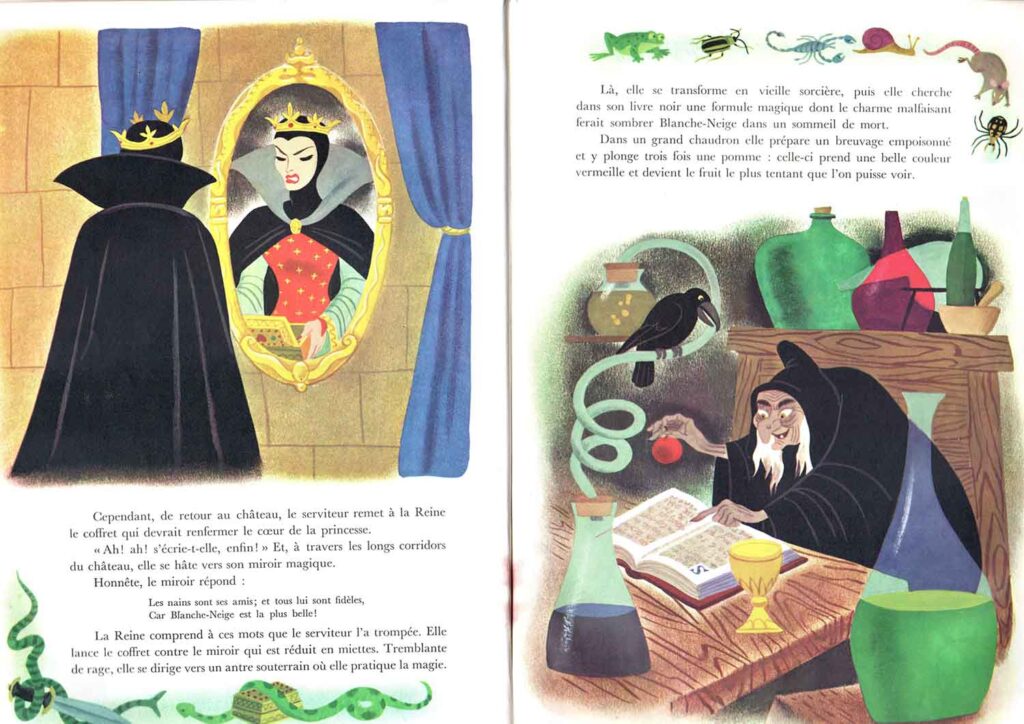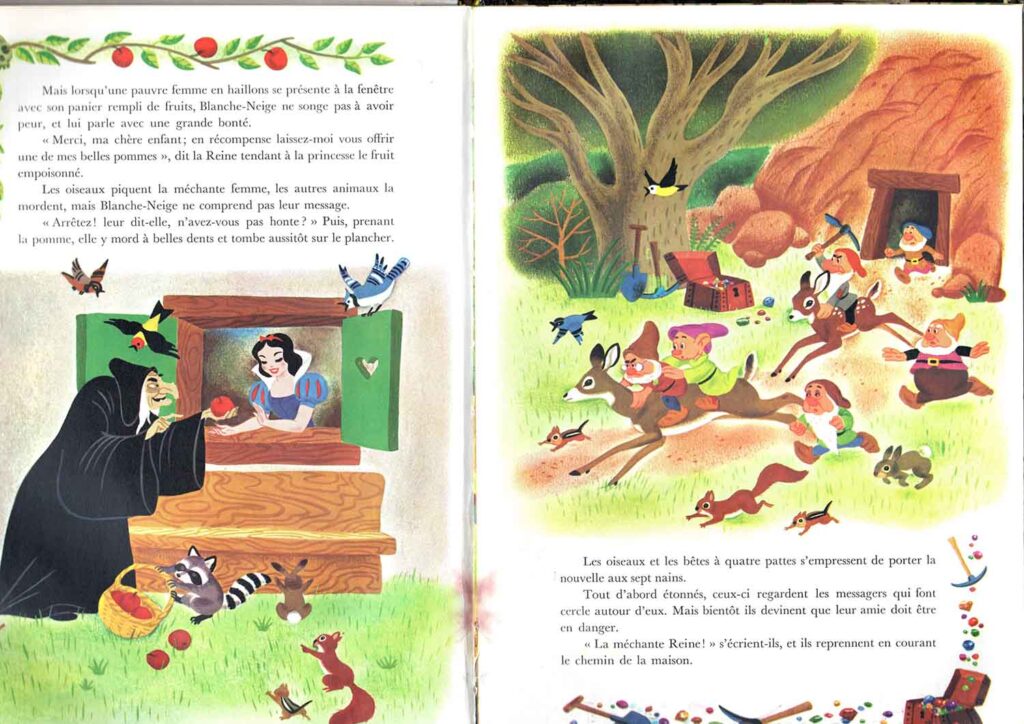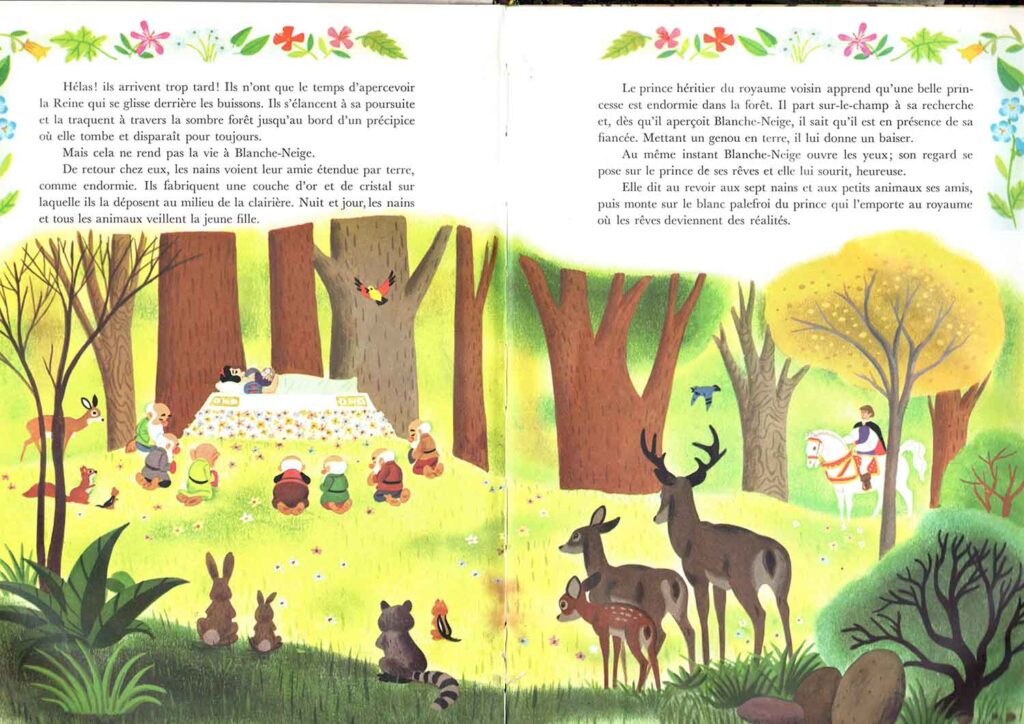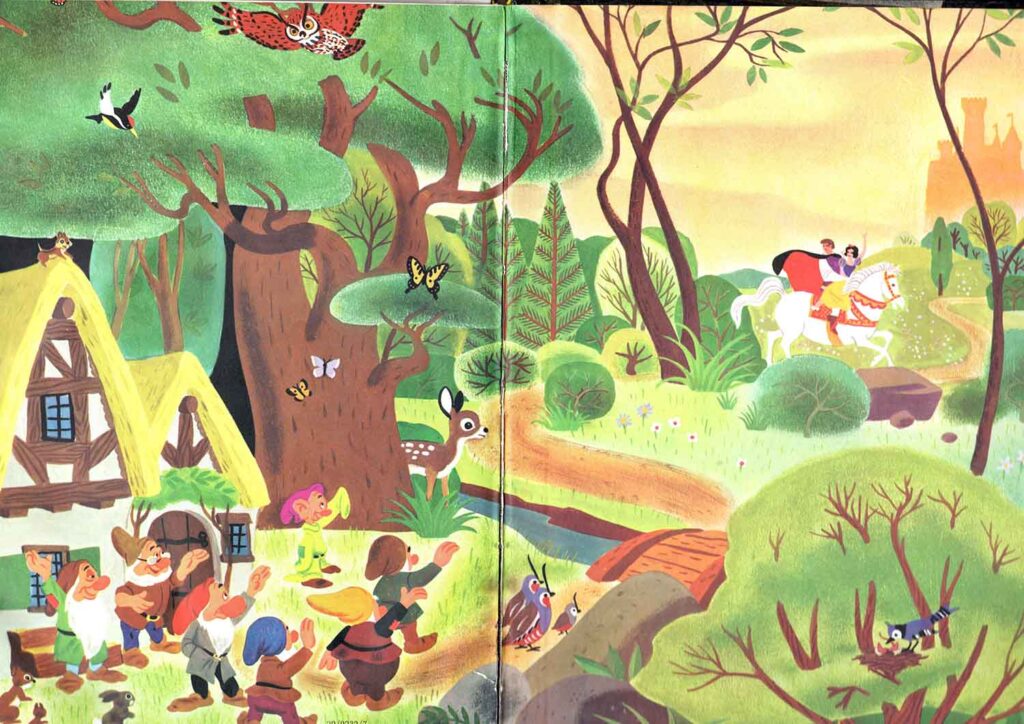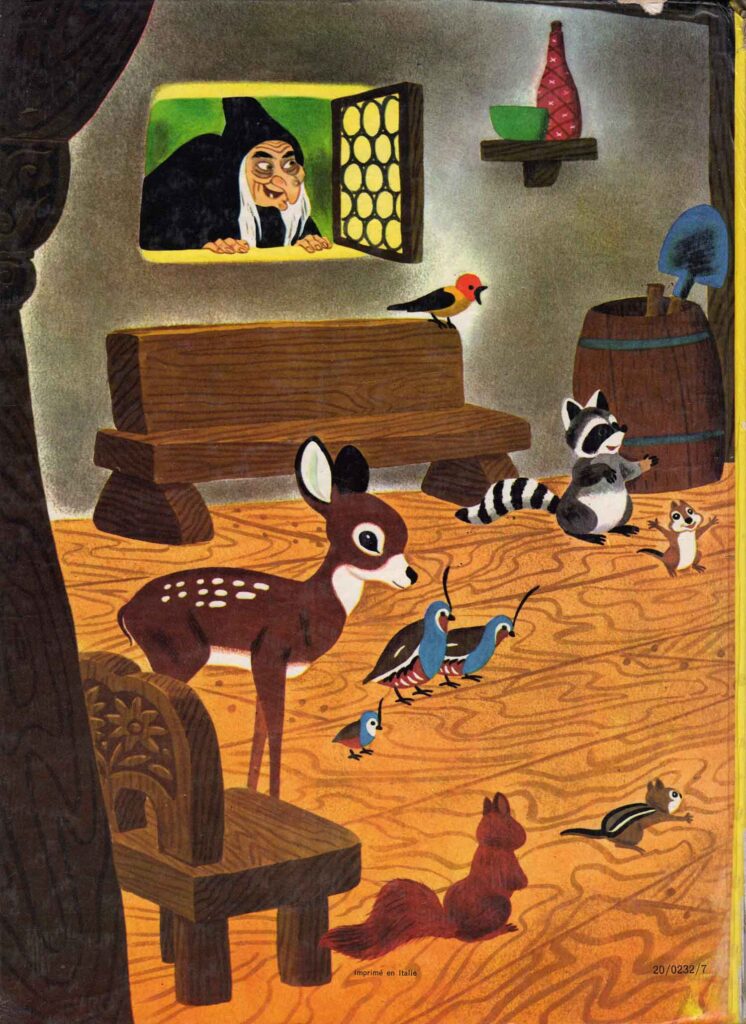Information
Complete title: Snow White and the Seven Dwarfs
Author: Jane Werner
Illustrations: Campbell Grant
Publication Date: 1953
Publishers: Hachette
Country: France
Retail price: FF?
Dimensions: 9.45″ x 12.5”
Number of pages: 28
Back to French Books
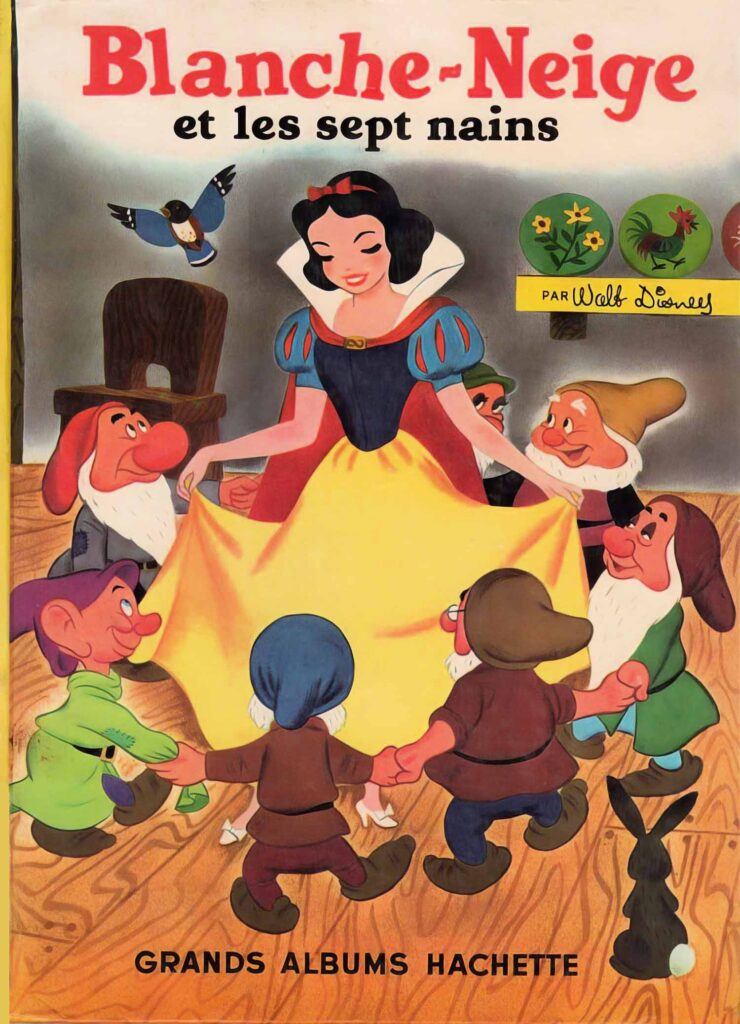
Since the film’s release, Éditions Hachette has held the contract to publish the books in France. In 1953, they adapted the 1952 American release of the Big Golden Books into the Les Grands Albums Hachette series.
The copyright “Walt Disney Productions, 1953 By permission of Walt Disney Mickey Mouse S.A.” is surprisingly located below the illustration of Snow White’s mother on page 4, while the preceding pages, dedicated to the book’s credits, are conspicuous by their absence of information. Only the title, collection and “Walt Disney” are given, but nothing about the author, illustrator or other contributors.
Over the years, the book has been reprinted in France (Chaix Paris, legal deposit 2nd quarter 1962, printed in Italy by GEA – Milan, legal deposit no. 5651 – 4th quarter 1972, 20.47.0232.15. These references appear on the back cover in 1962, on the last page in 1972, etc.).
It’s in the original American book that we find the original authors: Jane Werner for the text and Campbell Grant for the illustrations. In fact, the book has been almost entirely copied: the cover omits the edges of the drawing on the American cover, but the pages simply replace the English text with the French one. In fact, the anonymous translator began his text with the letter O (“On raconte”), so as to be able to reuse the original lettering (“Once upon a time”). Unlike the film, the name “Snow White” is hyphenated in the title and throughout the rest of the text.
The book was also published in a two-volume version in 1973 in the Caline Hachette collection. The same year, it was published in a similar edition to the previous one, with the notable difference that the cover was mainly blue, this time in the Le jardin des rêves collection. The book crossed frontiers and was adapted in different languages and forms, as in Italy, where it was published only as one of the stories in the collection “Il meraviglioso mondo di Walt Disney”.
The illustrations
Campbell Grant’s illustrations, in full color, are the undeniable asset of this book. The characters are reminiscent of those in the film, of course, but the graphic universe is unique to the book, and anyone who grew up with it will have been impressed by its style.
First of all, on the very first pages there are four scenes that have no equivalent in the film itself: at least 2 of them have their origins in the making of the film and have already been used in previous books, such as the dwarfs building the bed and the heroine’s mother sewing outside her window. The other two seem to be drawn from Grant’s imagination, allowing us to see the baby Snow White in her cradle and the Queen, from the top of the keep, watching her huntsman and the young girl walk off into the forest.
The style of the characters is subtly changed: Snow White wears a dress with red polka dots in 3 drawings, which disappear from the same dress on the following page. The Queen’s cape loses its ermine fringe and her collar becomes black, while her dress, originally a more subdued purple, shines here in a brilliant red adorned with small gold crosses, and her sleeves are emerald green.
Note the translation of the dwarfs’ names on their beds.
The illustrations will also be reused in other media, such as the reissue of the disc with Élyane Célis.

